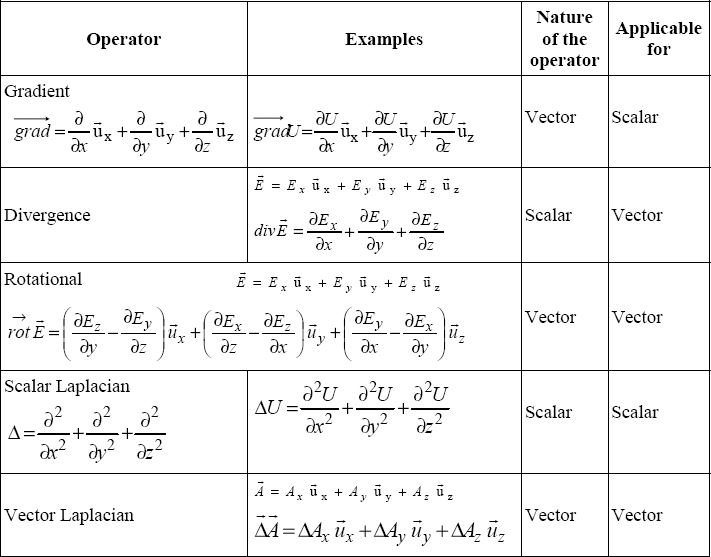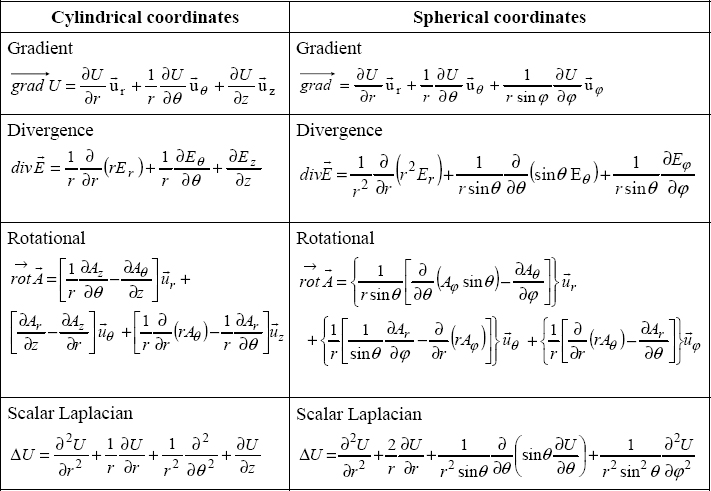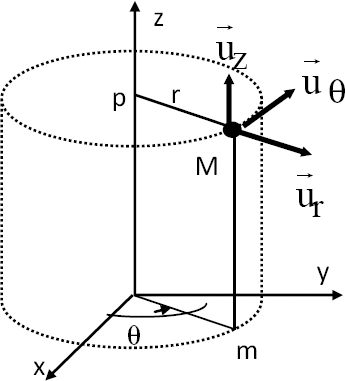Appendix 3
Operator Expressions in Cartesian Coordinates

For a color version of all figures in this book, see www.iste.co.uk/gontrand/electromagnetism.zip.

Cylindrical coordinates
When a property depends only on the distance to an axis (problems with cylindrical symmetry), it may be advantageous to take account of symmetry by making the axis oz play a privileged role. The opposite figure shows a Cartesian coordinate system (O,x,y,z) and a cylindrical coordinate system (0, r, θ, z). A point M in space projects in m on the polar plane and in p on the axis Oz.
The cylindrical coordinates of M are r, θ and z: M(r,θ,z):
r = 0M is the distance from M to the axis: (0 < r < +∝);
θ = < Ox,OM > is the polar angle (0 ≤ θ ≤ 2π);
z is the height(-∝ ≤ φ ≤ +∝).
The frame consists of three vectors: ![]()

Figure A3.1. Cylindrical coordinates
Spherical coordinates
When a property depends only on the distance to a point (problems with spherical symmetry), it is often convenient to consider this point as the origin O of a spherical coordinate system. Figure A.3.2 shows a Cartesian coordinate system ...
Get Electromagnetism now with the O’Reilly learning platform.
O’Reilly members experience books, live events, courses curated by job role, and more from O’Reilly and nearly 200 top publishers.

